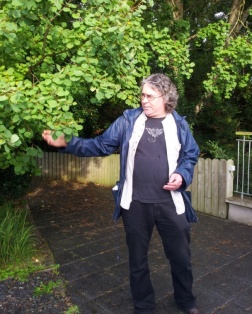Tomorrow (Friday, 22 April) is Earth Day. It was first celebrated in 1970 and is now Earth  Day is marked in almost 200 countries with events to demonstrate support for environmental protection and conservation. To coincide with Earth Day, the landmark Paris Agreement on Climate Change is scheduled to be signed tomorrow by the United States, China, and some 120 other countries. This signing satisfies a key requirement for the entry into force of the historic climate protection treaty. One of events to mark Earth Day in Ireland will be an afternoon seminar in UCD on ‘Flooding and Climate Change’.
Day is marked in almost 200 countries with events to demonstrate support for environmental protection and conservation. To coincide with Earth Day, the landmark Paris Agreement on Climate Change is scheduled to be signed tomorrow by the United States, China, and some 120 other countries. This signing satisfies a key requirement for the entry into force of the historic climate protection treaty. One of events to mark Earth Day in Ireland will be an afternoon seminar in UCD on ‘Flooding and Climate Change’.
Earth Day comes at a time when nature is bursting forth in the northern hemisphere, while in the southern hemisphere Earth Day comes at harvest time. In Ireland our spring is a bit late this year, in spite of the fact that climate change has meant much higher than average monthly temperatures worldwide so far this year. Nevertheless the primroses have now eventually appeared to brighten our hedgerows, the aroma of wild garlic pervades our woodland, the swallows have returned to check out our barns and the tadpoles are swimming in our ponds.
Planting trees has been selected as the major international theme of Earth Day this year – The aim is to start on the first phase of planting 7.8 billion trees worldwide by 2020. Trees store carbon and worldwide, many more trees need to be planted to help slow the increasing pace of climate change. Here in Ireland, a lot more land could be used to grow trees.
Those who don’t own land but have a garden could do a bit of tree planting this weekend. It is generally better to plant native trees such as oak or birch as opposed to non- native ones but account needs to be taken of the ultimate size of the tree and also if the soil is suitable for that tree. Of course you could plant trees that have other benefits such as those that produce edible fruit (apple, plum etc.) or nut trees such as hazel. Bare-rooted trees are suitable for planting if they have not yet burst bud. Saplings that have been in pots for a year are also suitable for planting now.
Apart from tree planting there are many other activities that one could do in support of Earth Day. Here are just a few suggestions:
- Walk, cycle or take public transport instead of the travelling by car.
- Help out with a local clean up, e.g. with a Tidy Towns Spring Clean effort.
- Sow some vegetable seeds in your garden and then be able to enjoy eating your own vegetables – that have with no food miles – later this year.
- Set up and use a compost bin in your back garden.
- Decide to save energy by improving insulation levels in your home and look up the improved grants available under the Better Energy Homes scheme at http://www.seai.ie.
- Become a citizen scientist on wildlife / biodiversity in County Monaghan. See http://www.biodiversityireland.ie or http://www.biology.ie.
- Eat less meat
- Stop using disposable plastic
- Shop locally and if possible by local or Irish made produce
- Donate to a charity that is helping those most in need around the world, e.g. by responding to the Equador Earthquake Appeal or the Migration Crisis Appeal by the Irish Red Cross (www.redcross.ie) or to the appeal by Concern to help with emergency food supplies in drought stricken Ethiopia and Malawi (www.concern.net)
- Join an environmental organisation – preferably one that is campaigning on issues such as climate change and sustainability. See the list of member organisations of the Irish Environmental Network at http://www.ien.ie or come along to a meeting of Transition Monaghan. For details email transitionmonaghan@gmail.com.
For more information on Earth Day see http://www.earthday.org
Events on at end of April and in May can be found here

